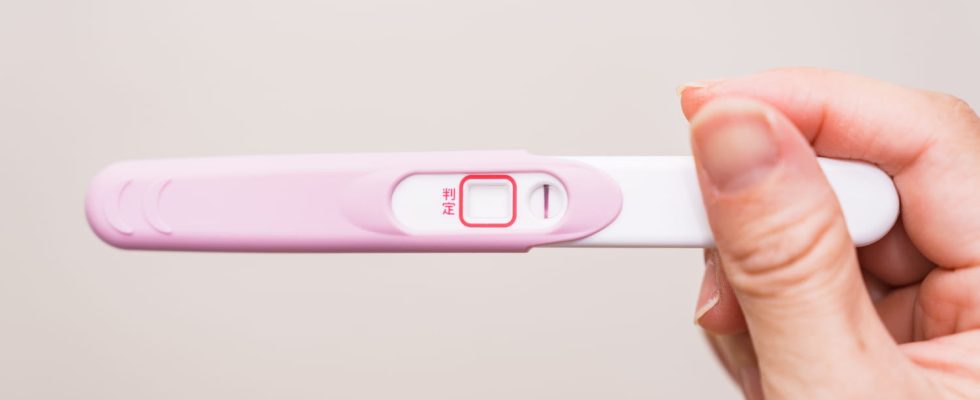Ovulation disorders (poor quality ovulation, absence of ovulation) are the most common cause of female infertility. An update on the signs to spot.
What is an ovulation disorder?
“An ovulation disorder means “ovulate poorly. Either the woman is not ovulating at all. There is anovulation. Either the ovulation is of poor quality and does not produce an oocyte of adequate quality to cause a pregnancy. It’s about a dysovulation”, informs Dr Elisabeth Paganelli, medical gynecology and Secretary General of the National Union of Gynecologists and Obstetricians of France (SYNGOF).
► Anovulation is the complete absence of ovulation. It can be temporary or more rarely permanent.
► Dysovulation refers to ovulation may be present but bad quality.
What are the signs of poor ovulation?
Ovulation disorders (anovulation or dysovulation) can be mentioned in the event oflack of rules (amenorrhea) or irregular periods (dysmenorrhea). “A woman who has irregular periods may or may not ovulate.” specifies Dr Elisabeth Paganelli.
What are the possible causes of ovulation disorders?
“Ovulation disorders may be due to hormonal disorders (like hyperprolactinemia – too much prolactin), aging ovaries (usual period of pre-menopause or early menopause) or polycystic ovary syndrome” describes Dr. Elisabeth Paganelli. Anovulation can also find its origin in disorders of the nerve centers which control the ovarian cycle, including psychological shock. The main causes of ovulation disorders are:
- either ovaries (polycystic ovaries or ovarian failure)
- either hypothalamic-pituitarydue to an abnormality of hormonal secretion.
Ovulation disorder after miscarriage
Miscarriage cannot cause ovulation disorders. “If the woman had a miscarriage because the oocyte was not of good quality, she may return to dysovulation. When a woman has several miscarriages, it is necessary to look for a problem with the quality of the oocyte, not the cycle.” indicates the specialist. “After a miscarriage or voluntary termination of pregnancy (abortion), women often ovulate a little later. They tend to have a 5-week cycle if we don’t block it. They tend to ovulate after three weeks. says Dr Elisabeth Paganelli.
The diagnosis of ovulation disorders is based on a questioning and a clinical examination. “Today we tend to explore with hormonal dosages and ultrasound of the ovaries to look at the number and size of the follicles. This ultrasound allows you to see if there are no or few follicles visible on the ultrasound, a sign of aging ovaries.” specifies our interlocutor.
Treatment of ovulation disorders depends on the cause. “Treatments can be identical to those for PMA, are inducers of ovulation; if the ovulation disorder is linked to too high a level of prolactin, medications are prescribed to lower prolactin levels; if ovulation problems are due to obesity, weight loss can improve ovulation, informs the gynecologist. The only case in which we do not have effective treatment is ovarian failure“.”Women are no longer advised to wait one or two years in the event of ovulation problems and the desire to become pregnant. A woman who has cycles of 40 or 60 days ovulates little and has little chance of pregnancy. Gynecologists can prescribe treatments to increase the amount of annual ovulations and increase the chances of pregnancy” indicates Dr. Elisabeth Paganelli.
Are you infertile when you have an ovulation disorder?
In 30% of cases, infertility is of female origin. “In Western countries, the most common causes of female infertility are ovulation disorders. Gynecologists can help women improve their ovulation except in the case of severe ovarian failure. An egg donation can allow a woman to become pregnant in this case“, she concludes.
Thanks to Dr Elisabeth Paganelli, medical gynecologist, Secretary General of the National Union of Gynecologists and Obstetricians of France (SYNGOF).
